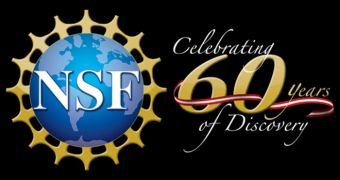This month marks the 60th anniversary of the US National Science Foundation (NSF), an organization that has been set into place in order to promote innovation and scientific research in the nation. In the subsequent decades, the NSF has been actively involved in providing generous funding for a wide variety of projects and research initiatives, through its numerous Divisions and Directorates. A very large number of the most interesting and useful discoveries made lately can be at least partially attributed to the efforts of the NSF, as well as to its study-selection process.
The NSF was signed into being by President Harry S. Truman in Pocatello, Idaho, on May 10, 1950. At the time, the Commander-in-Chief was located inside a private train cart. With the signing of the document, called the National Science Foundation Act, the NSF and the National Science Board – its governing body – were formed. Countless scientific and technological challenges were brought down and conquered due to the Foundation, but experts here have always said that more still lie ahead, just waiting to be tackled.
“The occasion of NSF's 60th anniversary is an opportunity to take a brief moment from our current day-to-day projects and reflect on what we've accomplished and what lies ahead,” the Director of the NSF, Arden L. Bement, believes. Official statistics show that the organization was involved in the work of no less than 187 Nobel Prize winners, to name just the most outstanding accomplishment. Its contributions to investigating basic science and engineering have made significant differences, but it's very difficult to correctly estimate the true influence that the NSF has on the world.
Every single year, NSF money go to at least 2,000 universities in 50 US states, covering over 11,500 new funding awards, from the 45,000 competitive requests for funding that it gets annually. Data show that the NSF is directly responsible for providing an estimated 20 percent of all federal grant money for basic research in American colleges and universities. Though on paper it only has a staff of about 1,700, the NSF is generally considered to include about 200,000 people, such as academic and small business researchers, graduate students and teachers at all levels.
“We have made many contributions to the pursuit of scientific discovery and to America's social and economic well being, and we look forward to our continuing work advancing and supporting creative ideas and innovative approaches to research and learning,” Bement explains.

 14 DAY TRIAL //
14 DAY TRIAL //